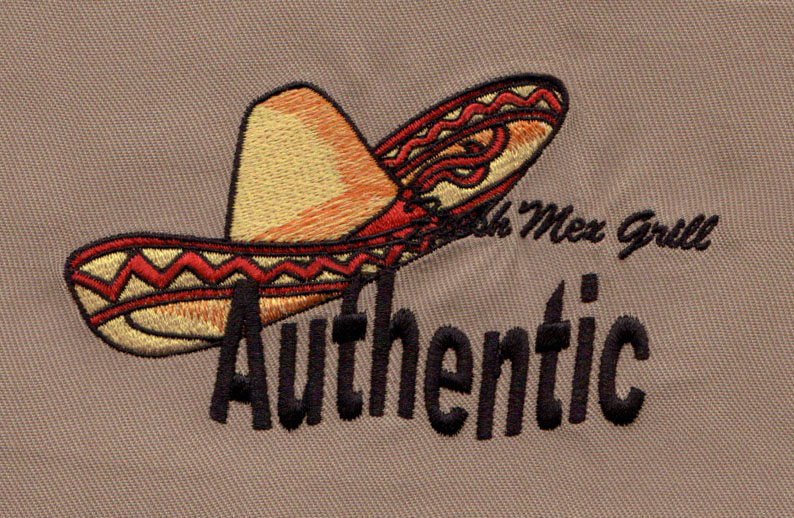Exploring Dimension: 3D Puff vs. Flat Embroidery Techniques
Embroidery is an ancient art form that has evolved significantly over the years. Modern embroidery techniques offer a range of options to add depth and dimension to designs, with 3D puff and flat embroidery being two prominent choices. In this comprehensive guide, we will delve into the characteristics, applications, and considerations of both 3D puff and flat embroidery, helping you choose the right technique for your creative endeavors.
1. Flat Embroidery: The Classic
Elegance
Flat embroidery is a traditional technique that involves stitching designs directly
onto the fabric, creating a smooth and flat surface. This method is
characterized by its simplicity and versatility, making it suitable for a wide
range of applications. Here are some key aspects of flat embroidery:
● Design Detail: Flat embroidery is well-suited for intricate details and fine lines,
making it ideal for designs with intricate patterns or typography.
● Fabric Compatibility: This technique works well on various fabric types, including
lightweight and delicate materials.
● Professional Appearance: Flat embroidery provides a professional and polished appearance, making it a popular choice for corporate logos, uniforms, and classic designs.
2. 3D Puff Embroidery: Adding
Texture and Dimension
3D puff embroidery takes the art to another
level by introducing texture and depth to the design. In this technique, foam
is placed beneath the embroidery, elevating specific elements and creating a
raised three-dimensional effect. Here are the key features of 3D puff
embroidery:
● Textured Appearance: The use of foam adds a padded texture to specific areas of the design,
creating a pronounced and eye-catching effect.
● Bold and Impactful: 3D puff embroidery is particularly effective for designs that require
a bold and impactful presence, such as sports logos or brand emblems.
● Versatility: While it may not be as versatile as flat embroidery in terms of fabric compatibility, 3D puff can still be applied to a variety of materials, including caps, jackets, and thicker fabrics.
3. Applications: Choosing the
Right Technique for the Job
The choice between flat and 3D puff embroidery
often depends on the specific application and design requirements. Let's explore
common scenarios where each technique shines:
● Corporate Branding: For corporate logos and branding on professional attire, flat
embroidery is a classic choice. It offers a refined and sophisticated
appearance that aligns well with the professional environment.
● Sports Apparel: When it comes to sports team logos and emblems, 3D puff embroidery is a
popular choice. It adds a dynamic and energetic element to the design, making
it stand out on uniforms, caps, and other athletic apparel.
● Casual and Streetwear: In the realm of casual and streetwear fashion, both flat and 3D puff embroidery can find their place. The choice depends on the desired aesthetic—clean and sleek for flat embroidery or bold and textured for a 3D puff.
4. Considerations for Design Complexity
and Size
The complexity and size of your design play a
crucial role in determining the most suitable embroidery technique. Consider the following factors:
● Intricacy: Flat embroidery is well-suited for intricate designs with fine details.
If your design involves small text or intricate patterns, flat embroidery may
be the better choice.
● Size: Larger designs can benefit from the bold and impactful nature of 3D
puff embroidery. The raised effect adds prominence to larger elements, making
them visually striking.
● Combination: In some cases, a combination of both flat and 3D puff embroidery can be employed within the same design to achieve a balanced and visually appealing result. This hybrid approach allows for versatility and creativity.
5. Fabric Selection: Tailoring
Techniques to Materials
The type of fabric you're working with can
influence the choice between flat and 3D puff embroidery. Consider the
following fabric-related factors:
● Thickness: Thicker fabrics, such as jackets or caps, can accommodate the padding
used in 3D puff embroidery. Flat embroidery may be a more suitable choice for
thinner materials.
● Texture: Fabrics with a smooth texture, like cotton or polyester, are generally
well-suited for both flat and 3D puff embroidery. Consider the overall feel and
appearance you want to achieve.
● Stretch: If the fabric has stretch or elasticity, such as in sportswear, flat embroidery is often the preferred choice as it maintains a smooth and even appearance even when the fabric is stretched.
6. Cost Considerations: Balancing
Budget and Aesthetics
Budget considerations are an important aspect when choosing between flat and 3D puff embroidery. While both techniques offer unique visual effects, 3D puff embroidery may involve additional costs due to the use of foam. Consider your budget constraints and weigh them against the desired visual impact.
Conclusion: Elevating Designs
with Embroidery Techniques
In the realm of embroidery, the choice between
flat and 3D puff techniques is not just about stitching—it's about
storytelling. Each technique brings its own set of characteristics, allowing designers
to play with texture, depth, and visual impact. Whether you opt for the
timeless elegance of flat embroidery or the bold
statement of 3D puff, understanding the nuances of each technique empowers you
to bring your creative vision to life. Ultimately, the magic lies in the
stitches, and the canvas is yours to embroider.


